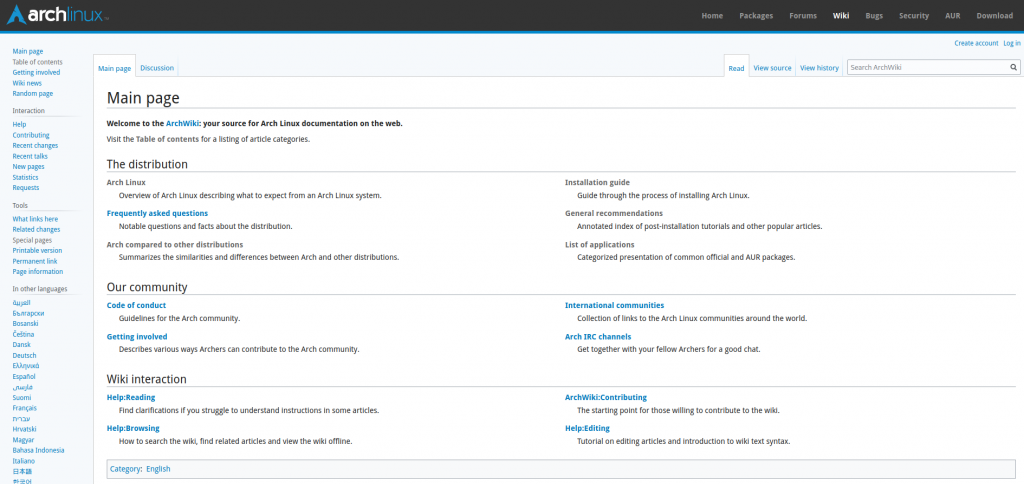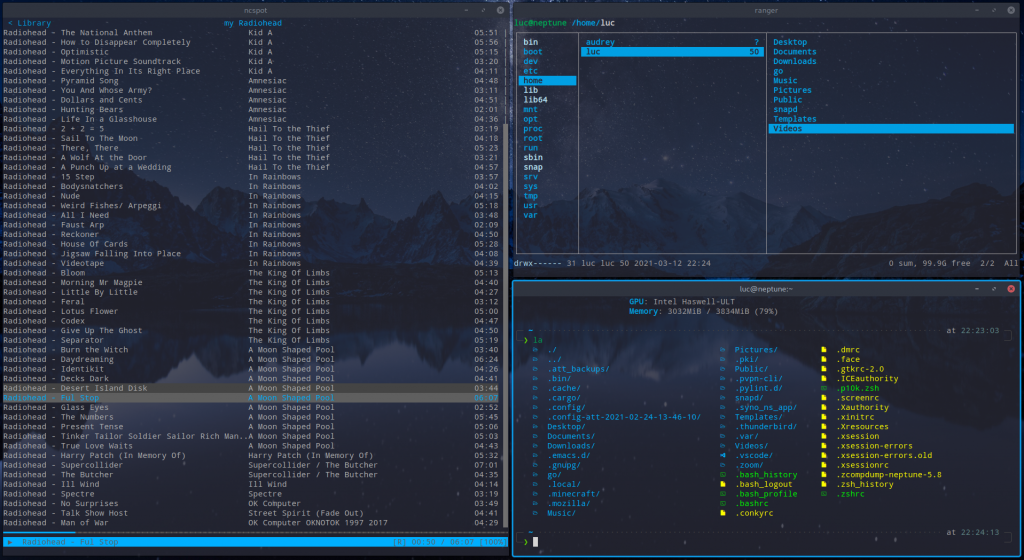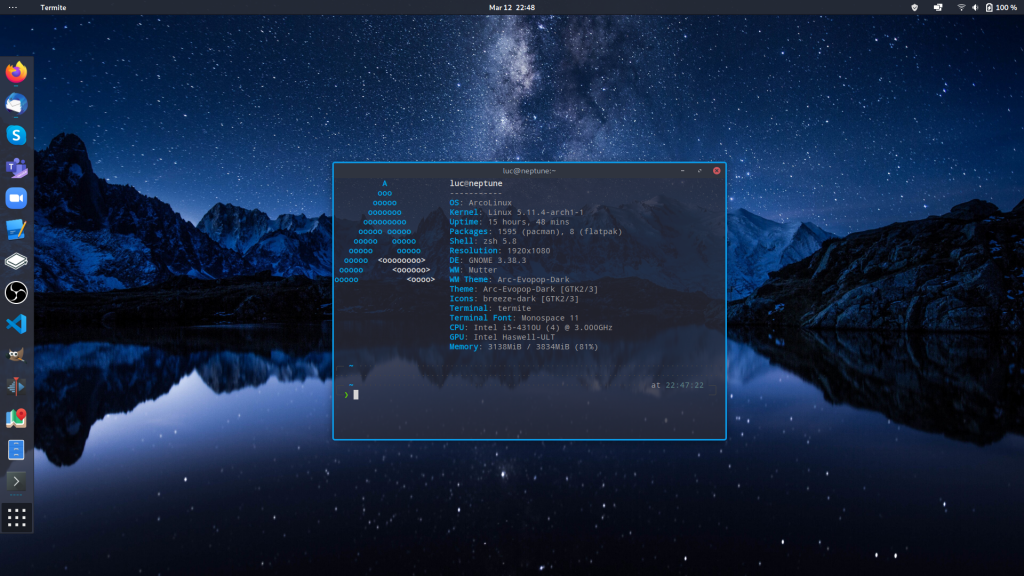If you are not using Linux, you may not know that there are actually hundreds (if not thousands) of Operating Systems using the Linux Kernel (or core). Each of them is offering something specific, whether it is a desktop environment, a particular package manager or a specific set of tools or programs to start with. Some of these distributions (or distros) are targeting new users coming from Windows or Mac, while others are targeting Linux power users.
Within the community, one of those distros is having a sulfurous reputation and is definitely dividing many users: its name is Arch Linux. Some might say that it is the most complex one, others may state that this is the distro with the worst community (not really tolerant to new users)… all of them may actually be right… partially.
I am everything but a power-user, which doesn’t really make me a good advocate for Arch Linux. That being said, I installed it and I really wanted to share my first impressions, as a proud Noob.
Temple of Doom
I used a very well-made Youtube tutorial for the installation (link to be added) and decided to go for the encrypted drive and i3 window manager options. The tutorial is very well made, but of course, there are specifications on your hardware which are not always contemplated in the videos. In my case, I was stuck when trying to mount my boot partition… Clearly a deal-breaker! I started the installation of Arch at 9AM and I successfully logged in i3 at 4PM… yes, this is how bad I am . Arch is actually asking you to do everything: create your own partitions, format them, mount them, install the base packages, manage your network, the locale, mirrors, keyboard preferences etc. All of this using the intimidating Linux shell and command lines, of course !
I actually had to go to the Arch Wiki and check the potential pitfalls linked to my hardware before being able to (approximately) understand my initial problem. Subsequently, I was able to fix it and move forward with the installation. And this is already what Arch is all about: analyzing, understanding, acting. I was never so happy to start my computer, than when I experienced my first successful boot of the system. And this feeling was just the start of it…

The Infernal Machine
The base install of Arch Linux is very…basic. There are plenty of additional packages, which you will want to install in order to use your newly created desktop environment. For me, this translated in not being able to do many of the tasks I actually wanted to perform. My electronic life was now moving from left to right, from the frustration of not being able to use the system, to the absolute satisfaction of fixing it. All of it supported by the Arch Wiki and its forums.
Not only I was finally able to get it to do what I wanted, but I was actually learning so much in the process. Arch is forcing you to get your hands dirty. It requires you to get under the hood and work until it actually works.
Easy? Absolutely not for me!
Rewarding? More than anything else!
From there. I started to play around and install many new terminal programs I would never have used on a more streamline Linux distribution (Ranger, NeoMutt, OhMyZsh, PowerLevel10K, ncspot etc.) . In many respect, my Arch experience made me feel way more comfortable with the terminal and allowed me to discover its powers.

After all, my system was not the quickest, nor the easiest, nor the best looking. It was only what I made, with my knowledge and with my limits. To some degree, Arch is just like a fart: yours never stink! Arch will always be everybody’s favorite because if you do not like it, it’s because you don’t yet have the skills to make it the way you really want. This is for me the best learning tool for Linux: if you stick to Arch long enough, you will naturally move into a power user (or at least a better user in my case).
The Last Crusade
The Holy Grail is the incredible AUR (Arch User Repository). If a Linux package exists: it is somewhere in there. The AUR is making the entire experience very versatile with easy access to a myriad of software. Out of all the complexity experienced before, there is true simplicity, Yay!

Just like the Grail itself, the AUR is also to be used at your own risk. Packages can potentially not work on your system and again, you need to be able to do manual adjustments to get things working in an optimal way…. but what a great feeling to have so much power in your own ends.
And what now?
So what is the verdict? I am now one of those saying “I use Arch, by the way”? Did I now join the dark side of the force? Well…. actually yes and no. Arch is a fantastic experience: very rewarding and full of new things to learn. It really opened my eyes on the potential behind Linux. After climbing that mountain, I was able to enjoy the view. I also knew that I was not meant to stay out there for too long… Since I did it once, I knew I could do it again if required.
I since decided to try other Arch based distros with easier installation processes (namely Manjaro, Garuda Linux and ArcoLinux). I decided to go for ArcoLinux on my laptop , mainly due to the fantastic flexibility and the plethora of out-of-the-box customization options.

When it comes to my desktop setup, it is a different story, since this is a computer that the rest of the family is also using. Arch is probably too much of a stretch and too much stress for beginners. This is why I decided to go for Pop OS, which is also the original distro installed on my System76 computer… But this is a different story, probably one taking place a long time ago, in a Galaxy far far away…

